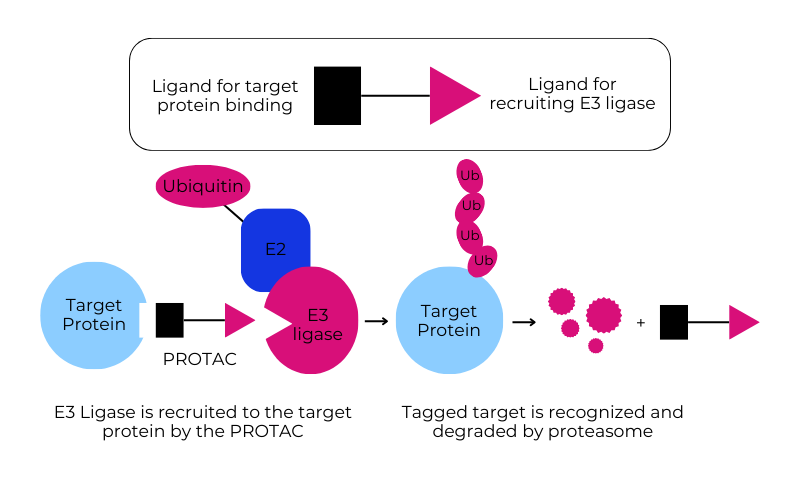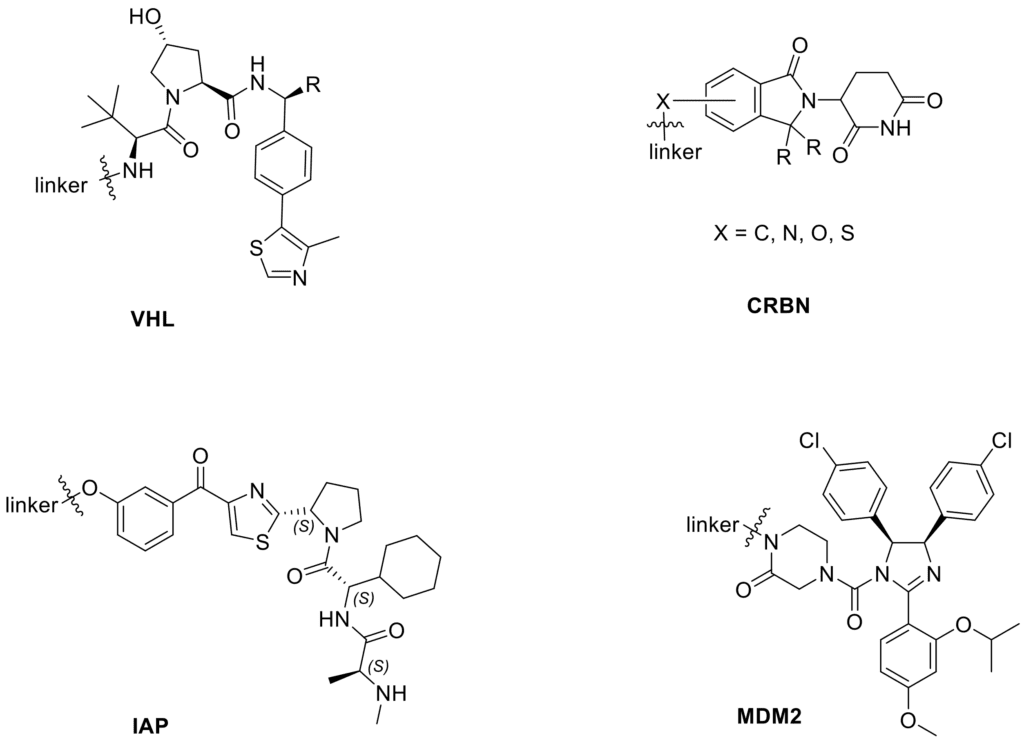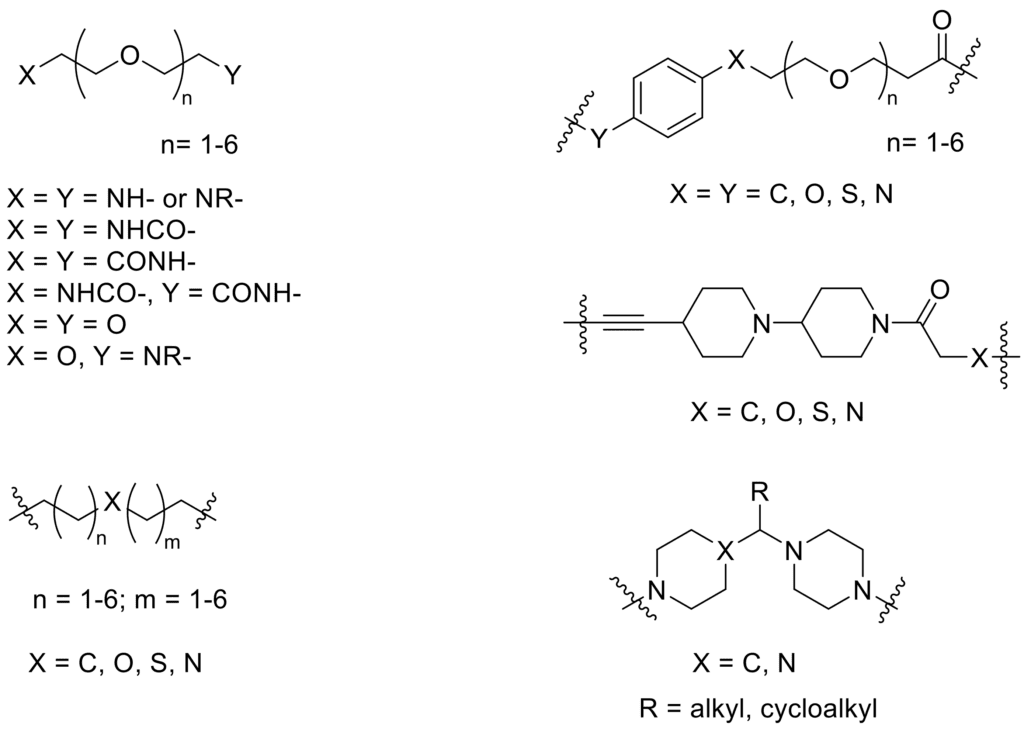Proteolysis targeting chimera (PROTAC) technology was first discovered in 2001, and it has developed rapidly in the past 20 years to become a powerful strategy in drug discovery, especially for undruggable targets/proteins. Currently, more than 10 PROTAC degraders have entered clinical Phase III trials.
A typical PROTAC degrader consists of three components: a small molecule ligand that binds to a target protein, an E3 ligase ligand, and a chemical linker that connects the first two components together. The PROTAC degrader engages the target protein of interest (POI) and E3 ligase to form a ternary complex, which hijacks the host ubiquitin-proteosome system (UPS) that induces the degradation of target proteins.

Since 2016, we have developed an integrated PROTAC platform to support our clients’ needs and address several challenging aspects particular to PROTAC degraders:
- The formation of a stabilized ternary complex between POI, degrader and E3 ligase is crucial for ubiquitin-proteosome-induced targeted protein degradation (TPD). The linker often plays a determining role in the ternary complex formation as well as in the protein-protein interaction (PPI) between POI and E3 ligase.
- Over the past seven years, we have built up a collection of preformulated linker building blocks, We can rapidly and cost-effectively generate libraries of 20–50 (or more) degraders to be tested in relevant assays.
- A challenge with PROTAC molecules is their undesired physicochemical properties due to chemical stability, large size, and high lipophilicity. We have vast experience with the synthesis, analysis, and purification of these compounds, which can be significantly more challenging than that with traditional small-molecule ligands.
- We have set up an integrated platform for profiling PROTAC degraders, such as ADME, DMPK, in vitro assays and in vivo animal models.
The Chemistry Toolbox
To specifically support the early-stage discovery of PROTAC degraders, we have evolved a modular chemistry toolbox in which different E3 ligands, diverse chemical linkers, and variable linking strategies are combined with optimized analytical routines.
We offer:
- Selection of E3 ligase ligands, including various CRBN, VHL, and IAP analogs, as well as novel E3 ligand synthesis
- Set of 100+ linker constructs of different lengths, composition (alkyl/PEG), and chemical handles
- Well-established chemistry to couple the linkers to the target ligands and E3 ligands using a variety of coupling strategies


Synthesis, Analysis, Purification and Profiling
- Integrated modular PROTAC platform established in 2016
- 50+ clients/collaborations
- 50+ methods of prep-HPLC and chiral-SFC for purification
- 100+ chemists with considerable experience in PROTAC synthesis
- Solid experience in versatile linker synthesis, 100+ readily available
- Medchem and CADD support available for PROTAC design optimization
- Novel linker synthesis with high productivity, quality, speed, and reliability
- Extensive experience in CRBN/VHL/IAP/MDM2 and novel E3 ligase ligands synthesis
- 30+ CRBN/VHL ligands readily available
- 20+ series of target protein ligands coupled with various linkers
- Customized PROTAC synthesis from mg to kg scale
- Fully integrated PROTAC platform for synthesis, ADME/DMPK, in vitro assays, and in vivo animal models

